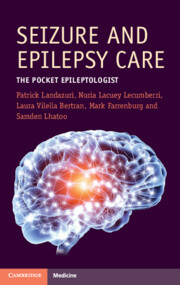205 results
Chapter 23 - Progress in Biomarkers to Improve Treatment Outcomes in Major Depressive Disorder
-
-
- Book:
- Clinical Textbook of Mood Disorders
- Published online:
- 16 May 2024
- Print publication:
- 23 May 2024, pp 237-250
-
- Chapter
- Export citation
An EEG study to understand semantic and episodic memory retrieval in creative processes
-
- Journal:
- Proceedings of the Design Society / Volume 4 / May 2024
- Published online by Cambridge University Press:
- 16 May 2024, pp. 1147-1156
-
- Article
-
- You have access
- Open access
- Export citation
Frontal theta oscillations during emotion regulation in people with borderline personality disorder
-
- Journal:
- BJPsych Open / Volume 10 / Issue 2 / March 2024
- Published online by Cambridge University Press:
- 04 March 2024, e58
-
- Article
-
- You have access
- Open access
- HTML
- Export citation
Brain potentials reveal reduced sensitivity to negative content during second language production
-
- Journal:
- Bilingualism: Language and Cognition , First View
- Published online by Cambridge University Press:
- 01 March 2024, pp. 1-12
-
- Article
-
- You have access
- Open access
- HTML
- Export citation
8 - Lost in the Fog of Alzheimer’s
-
- Book:
- Dispatches from the Land of Alzheimer's
- Published online:
- 19 January 2024
- Print publication:
- 22 February 2024, pp 34-37
-
- Chapter
- Export citation
Amygdala-related electrical fingerprint is modulated with neurofeedback training and correlates with deep-brain activation: proof-of-concept in borderline personality disorder
-
- Journal:
- Psychological Medicine / Volume 54 / Issue 8 / June 2024
- Published online by Cambridge University Press:
- 22 December 2023, pp. 1651-1660
-
- Article
-
- You have access
- Open access
- HTML
- Export citation
Is auditory processing measured by the N100 an endophenotype for psychosis? A family study and a meta-analysis
-
- Journal:
- Psychological Medicine / Volume 54 / Issue 8 / June 2024
- Published online by Cambridge University Press:
- 24 November 2023, pp. 1559-1572
-
- Article
-
- You have access
- Open access
- HTML
- Export citation
14 - Status Epilepticus
- from Section 3 - Neurological Emergencies
-
-
- Book:
- Practical Emergency Resuscitation and Critical Care
- Published online:
- 02 November 2023
- Print publication:
- 23 November 2023, pp 124-130
-
- Chapter
- Export citation
Chapter 3 - Electroencephalography
- from Section 1 - Neurologic Examination and Neurodiagnostic Testing
-
-
- Book:
- Handbook of Emergency Neurology
- Published online:
- 10 January 2024
- Print publication:
- 17 August 2023, pp 36-40
-
- Chapter
- Export citation
Biobehavioral mechanisms underlying testosterone and mood relationships in peripubertal female adolescents
-
- Journal:
- Development and Psychopathology , First View
- Published online by Cambridge University Press:
- 02 August 2023, pp. 1-15
-
- Article
- Export citation
Functional connectivity during tic suppression predicts reductions in vocal tics following behavior therapy in children with Tourette syndrome
-
- Journal:
- Psychological Medicine / Volume 53 / Issue 16 / December 2023
- Published online by Cambridge University Press:
- 24 July 2023, pp. 7857-7864
-
- Article
-
- You have access
- Open access
- HTML
- Export citation
A multivariate approach to investigate the associations of electrophysiological indices with schizophrenia clinical and functional outcome
-
- Journal:
- European Psychiatry / Volume 66 / Issue 1 / 2023
- Published online by Cambridge University Press:
- 26 May 2023, e46
-
- Article
-
- You have access
- Open access
- HTML
- Export citation
An EEG-based method to decode cognitive factors in creative processes
-
- Article
-
- You have access
- Open access
- HTML
- Export citation
4 - How Can I Best Use EEG for Treating Epilepsy Patients?
-
- Book:
- Seizure and Epilepsy Care
- Published online:
- 28 January 2023
- Print publication:
- 09 February 2023, pp 57-78
-
- Chapter
- Export citation

Seizure and Epilepsy Care
- The Pocket Epileptologist
-
- Published online:
- 28 January 2023
- Print publication:
- 09 February 2023
The effects of amount and frequency of pulsed direct current used in water bath stunning and of slaughter methods on spontaneous electroencephalograms in broilers
-
- Journal:
- Animal Welfare / Volume 15 / Issue 1 / February 2006
- Published online by Cambridge University Press:
- 11 January 2023, pp. 19-24
-
- Article
- Export citation
Assessment of Return to Consciousness After Electrical Stunning in Lambs
-
- Journal:
- Animal Welfare / Volume 11 / Issue 3 / August 2002
- Published online by Cambridge University Press:
- 11 January 2023, pp. 333-341
-
- Article
- Export citation
The effects of pulse width of a direct current used in water bath stunning and of slaughter methods on spontaneous electroencephalograms in broilers
-
- Journal:
- Animal Welfare / Volume 15 / Issue 1 / February 2006
- Published online by Cambridge University Press:
- 11 January 2023, pp. 25-30
-
- Article
- Export citation
The effects of amount and frequency of alternating current used in water bath stunning and of slaughter methods on electroencephalograms in broilers
-
- Journal:
- Animal Welfare / Volume 15 / Issue 1 / February 2006
- Published online by Cambridge University Press:
- 11 January 2023, pp. 7-18
-
- Article
- Export citation
The first appearance of EEG evidence in a UK court of law: a cautionary tale
-
- Journal:
- BJPsych Bulletin / Volume 48 / Issue 2 / April 2024
- Published online by Cambridge University Press:
- 09 January 2023, pp. 124-126
- Print publication:
- April 2024
-
- Article
-
- You have access
- Open access
- HTML
- Export citation



